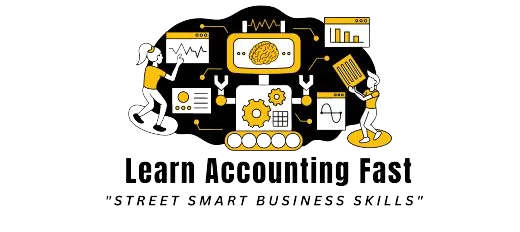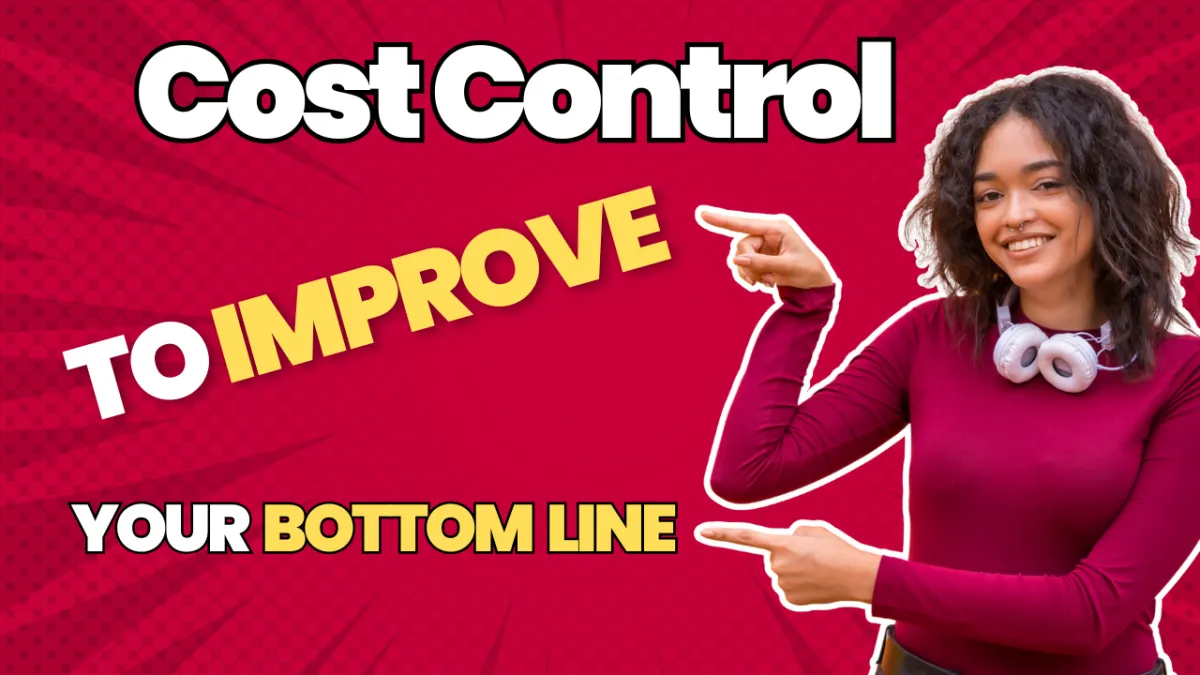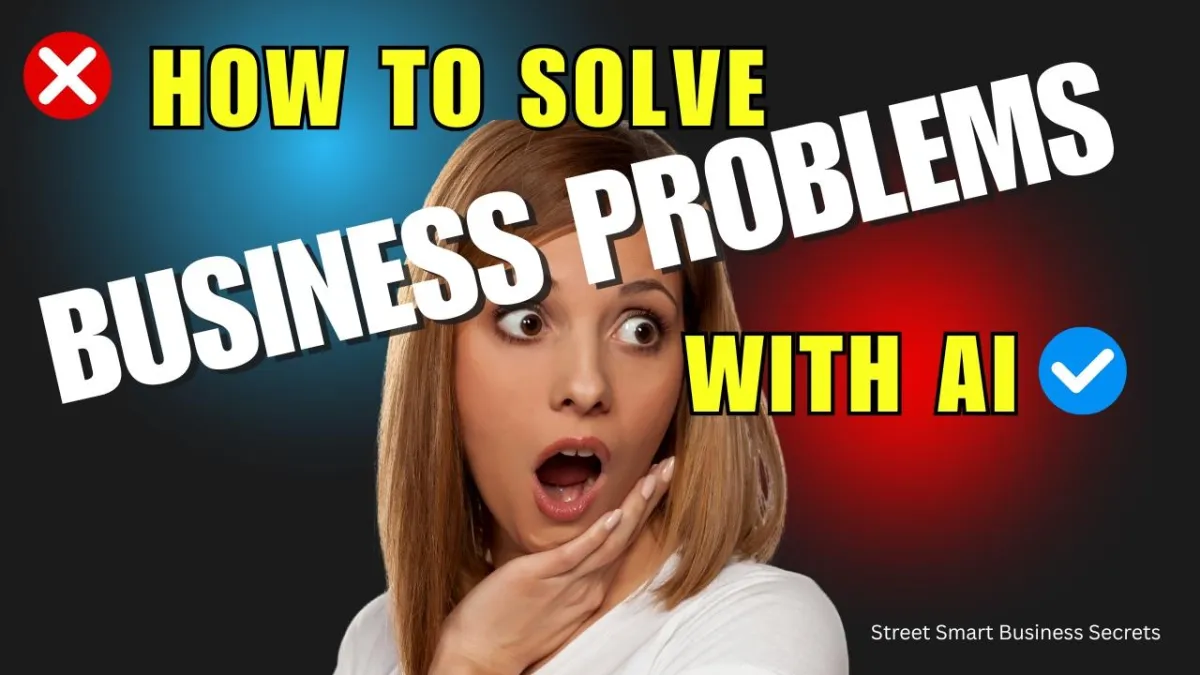Why Cost Control Is the Forgotten Key to Profitability
Why Cost Control Is the Forgotten Key to Profitability
Most entrepreneurs chase sales growth like it’s the only thing that matters.
They spend thousands on ads, new products, and fa ncy offices, believing revenue alone will fix their business problems.
But here’s the truth: your bottom line often grows faster by controlling costs than by boosting sales.
When I built my first business, I made this exact mistake.
I focused on increasing revenue without tracking expenses.
At the end of the year, the accountant showed me that I had doubled my sales but barely improved profit. That lesson stung.
Since then, I’ve studied how the smartest operators, people like Warren Buffett, Charlie Munger, and even marketing gurus like Russell Brunson, keep costs lean while building scalable businesses. Let’s take a close look into cost control techniques that can dramatically improve your business's bottom line.
1. Track Expenses Like an Investor, Not an Employee
Most business owners see expenses as just bills to be paid. The wealthy see them as investments that must earn a return.
When Buffett evaluates a business, he looks at how each dollar flows through the system. You can apply the same thinking:
Ask: Does this expense generate revenue or reduce risk? If not, cut it.
Review every subscription and vendor quarterly. (I once found $600/month wasted on tools my team hadn’t
logged into for six months.)
Use accounting software that categorizes costs in real time.
Street Smart Tip: Pretend you’re buying your business as an investor.
Would you accept your current expense structure if it were handed to you?
If the answer is no, it’s time for cuts.
2. Apply the “Zero-Based Budgeting” Method
Charlie Munger famously said: “The best way to get what you want is to deserve what you want.”
In business, that means not allowing lazy costs to pile up.
Most owners budget based on last year’s numbers. But zero-based budgeting starts from scratch:
Every expense must be justified fresh each year (or quarter).
No “carryover costs” just because they existed before.
Forces teams to prove the value of spending.
When I applied this in one of my businesses, we cut 18% of expenses without affecting operations.
Suddenly, cash flow improved, and profits jumped without a single new customer.
3. Negotiate Ruthlessly—Like the Big Players Do
One of the biggest secrets of successful business operators is that they negotiate everything.
I once assumed that vendor prices were fixed.
Then a mentor told me, “If you don’t ask, you’re paying retail. And retail is for amateurs.”
Practical ways to negotiate:
Ask for volume discounts even if you’re small (many suppliers will say yes).
Offer to pay faster in exchange for lower rates.
Bundle services, when I combined printing and delivery under one vendor, I saved 12%.
Street Smart Twist: Think like a contractor. Builders never pay sticker price for materials. Why should you?
4. Automate Cash Flow Management Leaks (Without Over-Automating)
Here’s a mistake I made early: I hired staff for tasks that software could easily handle.
Payroll ballooned. Once I replaced repetitive tasks with tools, like invoice reminders, scheduling, and simple email follow-ups, we cut admin time in half.
But here’s the balance: don’t spend more on software than it saves you. A $500/month tool that saves $200 worth of labor is a loss.
Ask yourself:
Is this task repetitive and rules-based? If yes, software can handle it.
Does this task require judgment or human interaction? Keep it human.
This balance keeps costs low without sacrificing quality.
5. Master the “Owner’s Earnings” Mindset
Robert Kiyosaki teaches cash flow is king, but Buffett takes it further with the concept of Owner’s Earnings, the cash left after necessary expenses and maintenance.
Here’s how you can use it:
Focus not on “accounting profit” but on how much real cash is left.
Cut non-essential CapEx (fancy office renovations don’t pay bills).
Prioritize expenses that directly improve long-term business profitability.
When I adopted this, I stopped confusing “busy business” with “profitable business.”
That shift alone added six figures to my bottom line.
6. Small Leaks Sink Big Ships: The Pareto Rule of Costs
Tony Robbins often says, “Where focus goes, energy flows.” In business, 20% of your costs likely create 80% of your waste.
Do a Pareto analysis on your expenses:
Identify the top 20% of categories where overspending occurs (e.g., overtime wages, unmonitored marketing campaigns, unused office space).
Attack those first instead of chasing pennies.
When I did this with a client’s business, we discovered their delivery costs were swallowing margins.
By switching logistics partners, they saved $48,000 annually.
7. Build a Culture of Cost Awareness (Without Killing Morale)
The richest entrepreneurs don’t just cut costs; they teach their teams to think like owners.
Ways to do this:
Share profit-and-loss highlights with staff.
Reward employees for cost-saving ideas.
Frame savings as “more fuel for growth” rather than “we’re broke.”
One of my favorite stories: a team member suggested batching shipments weekly instead of daily. It cut courier costs by 35%. We gave him a bonus equal to one month’s savings—everyone won.
Profit Is Earned Twice, When You Sell and When You Save
Here’s the lesson most business owners miss: revenue makes you busy, cost control makes you wealthy.
When I lea
rned to apply these cost control techniques - zero-based budgeting, ruthless negotiation, automation, and owner’s earnings thinking, I no longer feared rising costs.
I had tools to protect and grow the bottom line.
If you’re serious about strengthening your business, don’t just focus on how much you make.
Focus on how much you keep.
Frequently Asked Questions
What are cost control techniques in business?
Cost control techniques are strategies used to manage and reduce business expenses without sacrificing performance. Examples include zero-based budgeting, negotiating vendor contracts, automating repetitive tasks, and analyzing owner’s earnings.
2. How do cost control techniques improve the bottom line?
They increase business profitability by reducing wasteful spending, ensuring each dollar spent contributes to revenue or risk reduction, and freeing up cash flow for growth.
3. Can small businesses apply these techniques effectively?
Absolutely. In fact, small businesses often see the biggest gains because even small savings (like renegotiating supplier costs or canceling unused subscriptions) have an immediate impact on their bottom line.
Click the link below to discover more street-smart strategies for building a profitable business in today’s environment.
Be the greatest you can be…
Join us, click the link below for short, sharp, simple video courses that give you confidence and street-smart business skills to simplify business and accounting and focus on growing your business to succeed.

Latest Posts
The Six Laws of
Wealth Creation
The Six Laws of Wealth Creation. These timeless actions work in 2025’s rapid-change environment and give you calm, repeatable steps to grow money.....
How to Read Business
Financial Reports
A Story of Business Secrets Hidden in Reports
Sarah sat in her office staring at a thick folder of financial reports. Sales, costs, cash flow....
The Millionaire
Mind in Action
Timeless Wealth, Flow, and Power from Robert Kiyosaki,Frank Kern, Tony Robbins
and Open Ai......
Why Cost Control Is the Forgotten Key to Profitability
Most entrepreneurs chase sales growth like it’s the only thing that matters.They spend thousands on ads, new products, and fa ncy offices.....
Master Prompts For
Financial Analysis
The Complete Small Business Guide to Financial Analysis: Formulas, Examples, and Tips.These are super-powerful questions you can ask an AI to help..
How To Solve Any Business
Problem With Ai
AI can help you solve all of these faster, smarter, and more affordably, if you know how. This guide will show you exactly how to do that.........
Disclaimer: The content shared on this blog and in these videos is for informational and educational purposes only. Despite my 30 years of experience as a business owner, I am not a certified financial advisor, accountant, or legal professional. The insights and tips shared are based on personal experiences and should not be taken as professional financial or legal advice. For financial, legal, or professional advice, please consult with a certified professional in the respective field. I disclaim any liability or responsibility for actions taken based on any information found in this blog or these videos.
Copyright Learn Accounting Fast - All Rights Reserved 2025











Facebook
Instagram
X
LinkedIn
Youtube